Overview
Buy Central America from
Noble Knight Games
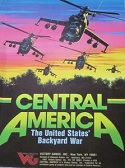
Central America, designed by James H. McQuaid and published by Victory Games in 1987, is an operational level war board game simulating historical and hypothetical conflicts in Central America in the 1970s and 1980s. The country of Nicaragua is at the center of the conflict in most scenarios, but the game also includes scenarios depicting internal conflicts in El Salvador and secondary conflicts between Honduras and El Salvador. And, of course, potential outside intervention by the United States, Cuba and (to a lesser degree) the Soviet Union, comprises the foundation of this board game.
There are aircraft, helicopter and ground units represented in the game. Since the US has such naval dominance in that part of the world, actual naval units are not used in the game and “carrier groups” are simply map boxes used to hold aircraft. The military units of Nicaragua, El Salvador, Honduras, Cost Rica, Cuba, United States and the Soviet Union are included, as well as all the various guerilla, insurgency and political factions in the region (FDN, ARDE, FMLN, etc.). There are even special scenario units for Israeli Mossad, Communist International, Libya and the Popular Front for the Liberation of Palestine (PFLP), so we’re talking about a well researched project, not simply a “red units” vs. “blue units” kind of game.
Although designed as a two player game, it expands well to accommodate two additional players (one per side) and is even marginally enjoyable
solitaire. The publisher assigns it a complexity level of between 7 and 10 (i.e. “High” to “Very High” complexity), although I disagree with the high end of those ratings.
It’s a big game in the sense that there are a lot of units and a lot of rules, but I don’t believe it should be viewed as an extremely complex game,
as we’ll discuss in more detail shortly (I find games like Gulf Strike, Flat Top, and Pacific War to be much more complex).
The 22″ x 32″ map and other game components are par for the 1980’s. The map is legible, succinct and functional (but could have been made a bit
larger).
This article will take a fresh look at Central America, evaluating the major facets of the game and highlighting what I consider to be some of the more salient and interesting features.
The Rules
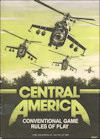
Conventional Game Rules
OK, let’s get this issue out of the way right now. I remember, back when this board game was first published, the initial reactions
of a lot of gamers to the magnitude of TRP (Total Rules Pages). Let’s examine this.
The rules are broken up into two major categories: Conventional Game Rules and Intervention Game Rules.
There are also 16 Scenarios, or predefined game situations, included. Each scenario is designed to be played as either
a “Conventional Game Scenario” or an “Intervention Game Scenario”. The Conventional rules contain all standard movement, combat
and supply rules and just about half of the 16 scenarios can be played using these rules alone. The rest of the scenarios require
the usage of the Intervention Game rules which address the special abilities of American military, the enhanced capabilities of
certain units (“Guerrilla Attacks”), and Political rules and restrictions. Finally, there are a set of Optional Rules that enhance
the realism of the simulation.
The various documents/booklets are as follows:
- Conventional Game Rules of Play – 64 pages of rules just for the Conventional (or basic) game.
- Intervention Game Rules of Play – 40 pages of rules for the Intervention game.
- We don’t need to mention the 63 page Scenarios Booklet, because that does not need to be read, just referred to prior to
setting up a scenario, and afterwards to evaluate the victory conditions.
Now I know this doesn’t exactly sound like anyone’s idea of “light reading”, but once you’ve actually looked at the various books, things seem more manageable.
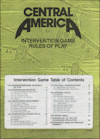
Intervention Game Rules
First of all, they are some of the most unambiguous rules I’ve ever read. While they’re intimidating at first glance, you’ll find
that the heft is due mainly to the focus on clarity. They probably used twice as many words as were absolutely necessary, just to
make sure there were no misunderstandings. While that can be annoying at times, I prefer it to the alternative: too few words and
prodigious ambiguity. But you learn to skim over the various sections, drilling down to the small details when something doesn’t click
at first glance. There are nearly 6 pages, in the Conventional rule book, containing graphics and descriptions of the unit counters, a
glossary, and an abbreviation list. Did we have to know that “PCS” is the abbreviation for the “Salvadoran Communist Party”?
No. But it’s in line the with high quality of the product… and, by the way, I do want to know the definition of every
abbreviation on the counters.
Secondly, not only is each rule explained in great detail, but almost every rule section contains a companion graphical example. It’s a bit hard to quantify exactly, but I’d say that the Conventional Rules book contains approximately 12 pages of pictures and explanatory text, 1 full page index, and 1 full page Game Information Summary on the back cover. The Intervention Rules have about 8 pages of pictures and explanatory text, 6 pages of historical background text, a 4 page detailed Sequence of Play, and a 1 page Intervention Game Information Summary on the back cover.
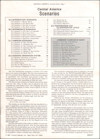
Scenario Booklet
Scratch the two booklet cover pages and the Conventional Rules table of contents… and you eliminate about 42 pages of rules. So, now you’re left with about 62 pages of rules remaining. Still not “waiting room reading”, but more in line with other games like “Gulf Strike”, “Vietnam: 1965-1975”, “Sixth Fleet”, etc. And, as I mentioned earlier, the rules are quite verbose, using twice as many words as you need to absorb the content. So, if we now divide the remaining 62 pages of hard rules in half… we end up with the equivalent of 31 pages of rules!
OK, so I may have used-car-salesman’d this argument to the degree that I’m losing readers already, but my point is this: the rules are not as difficult as the thickness of the booklets would indicate. I was able to skim the sections, drill down a bit here and there, refer back as necesary while playing the smaller scenarios, and I mastered them in no time. There’s no need to found a university dedicated to the study of Central America rules. Don’t be put off by them. ‘Nuff said.
Game Features
The Combatants

Nicaraguan Armor Unit
Central America was designed as a two-player game, although it is well suited for team-play. The two top-level combatants are referred
to broadly as the Communist player and the Allied player.
The bulk of the Communist player’s forces are made up of Nicaraguan national forces, also known as FSLN (Sandinista National Liberation Front),
with strong air support from the Soviet and Cuban air forces. The Communist unconventional warfare capability is formidable, and is composed of the
several guerilla groups (most notably the FMLN) operating in neighboring El Salvador and Honduras, with the intention of destabilizing
the U.S.-allied governments there.
There are several game scenarios that don’t involve significant American forces (other than the omnipresent CIA), but the most interesting scenarios allow for a wide array of U.S. ground forces (mostly rapid reaction types like 82nd Airborne and Marines), Air Forces and Naval Air power. They pack quite a punch, but are also a vulnerability as the victory point penalties in most scenarios are quite stiff for U.S. air and ground units lost in combat.

Cuban Air Unit
While Nicaraguan ground units are pretty sturdy, only Cuban and Soviet air units can give the American pilots a run for their money. There are no Soviet ground units in the game, but Cuban ground forces are quite powerful. Nicaragua also boasts a decent anti-air and EW capability.
Until American military units intervene, the Allied player is dependent on Honduran and El Salvadoran national armies to contain the
sometimes aggressive Nicaraguans. The allied unconventional capability is provided largely by the notorious FDN and ARDE (aka
“The Contras”) crossing into Nicaragua from bases in Honduras and Costa Rica to create trouble for the Soviet-inspired government there.

CIA Air Unit
The various conflicts in Central America since the 1960s have generally been murky affairs, suggesting oversized interference by
various world intelligence agencies, with the U.S. Central Intelligence Agency (CIA) preeminent among them. To reflect the
CIA’s substantial (and covert) budget for the conduct of operations in the region, the CIA is accorded a powerful set of units
including Engineer (ground combat), Entrenchment, Transport/Attack Helicopter, Electronic Warfare (EW) and
Anti-Aircraft units. (The CIA probably never had so much firepower on tap again until after September 11, 2001).
Insurgency Units

FMLN Insurgency Unit
One feature of Central America that differs from other “modern” warfare games I’ve played is the emphasis on Insurgency units. There are
special placement, movement, disbanding and counterinsurgency rules that make Insurgency units potent, yet fragile, assets. They are weak relative
to conventional ground combat units, yet they move fluidly through enemy Zones of Control, can disappear (Disband) and reappear elsewhere
shortly afterwards, in a manner that is most frustrating to the conventional forces trying to hunt them down. There is even a specific Air
Mission called Aerial Counterinsurgency, dedicated to the destruction of newly placed Insurgency units. You’ve got to learn to manage
these units to best effect in order to win this game.
However, I found it a bit surprising when I discovered that, although they occupy a good chunk of the rules, Insurgency units’ only impact on combat is a +1/-1 (attacker/defender) modifier to the combat die roll. I’m not sure exactly what I was expecting from Insurgency units. After all, they probably represent poorly trained recruits with the ability to blend in with the general population. I just thought they’d have a greater impact in combat. But the game design directs that Insurgency units are most effective when doing what they do best: (1) slipping past Zones of Control to help encircle an enemy or penetrate deep into enemy territory, and (2) appearing magically (via the Insurgency Placement procedure) where and when they’re needed most.

FDN (Contra) Insurgency Unit
Also, if using the Intervention Game Rules, Insurgency units may make special Guerilla Attacks against installations or a terrain feature (road, bridge, port, etc.).
So now that I’ve enumerated their capabilities, I guess Insurgency units are effective enough in their own way. They just don’t mean much in a “stand-up” conventional battle. Which is probably what the designer intended. OK, Mr. McQuaid, I think we’re on the same page now regarding Insurgency units…
Helicopters
Due to the generally low intensity nature of the conflict simulated in this game (excepting the horrendously destructive air battles
between U.S. and Cuban/Soviet air forces), much emphasis is placed on Helicopter units. Helicopters have their own rules section separate
and distinct from the rules for fixed wing aircraft. They are versatile units that provide the players with Bombardment Strike,
Close Air Support, Ground Combat Support (an operation permitted only to helicopters), Aerial Counterinsurgency,
Transfer (Ferry), Transport Strike (Paradrops and Helicopter Assaults) and Escort missions.

Gov't Helicopter Unit
The Ground Combat Support mission is unique in that a Helicopter can be assigned to the defense of a particular ground unit, and then remain in the hex to support a subsequent counterattack by the same ground unit. Conversely, they can be assigned to offensive Ground Combat Support, and then stick around to defend against a potential enemy counterattack. This attack/defense or defense/attack combination is considered a single mission.
As has been the case since the Vietnam War, Helicopters provide the mobility required of a modern army in the type of inhospitable terrain that exists in the jungles and mountains of Central America. In the larger scenarios, both players are granted a considerable helicopter transport capability.
Fixed Wing Aircraft
Fixed wing air combat units are heavily represented, and the air battles can get quite intense as U.S., Nicaraguan, Soviet and Cuban air units battle to control the skies over Managua, the Carribean Sea, and the Pacific Ocean. Aircraft basing, movement and combat rules are straight-forward and don’t bog the game down as can happen in other “modern” warfare games. When compared to the air rules for one of my other favorite board games, Gulf Strike, at least 3 things immediately come to mind as improvements in Central America:
- Detection – Rather than making the inactive player roll a die to see if an approaching enemy unit has been detected, Central America rules assume that if the enemy unit has entered friendly detection range, it’s automatically detected. Probably dampens the realism a bit, but it sure makes the game turns move along faster.
- Air Combat Ratings – This rating applies to the general capabilities of the aircraft (“D” = Defensive, “S” = Slow, “J” = Jet) and determines the ability of air units to engage each other. For example, “S” air units cannot even attempt to intercept “J” units. This adds realism, in my opinion.
- Movement to Combat – After detecting an enemy air unit in Gulf Strike, interceptors move two hexes, then the “interceptee” moves two hexes, then the interceptors move two more hexes, etc. This can sometimes lead to bizarre chase patterns as attacking air units travel in circles and arcs, attempting to outlast a pursuing aircraft that may have a lower movement allowance. In Central America, if the enemy air unit is in detection range, is within the movement radius of the potential interceptor, and the interceptor has sufficient Air Combat Rating to catch the invader (e.g. an “S” rated intecepter vs a “D” rated attacker), then the interceptor is moved directly to the hex with the attacker and combat ensues. This simulates combat air patrolling and is, in my opinion, superior to the Gulf Strike system (although a subsequent Gulf Strike variant did somewhat address this issue).
Fixed wing Air units are afforded the same wide range of missions as Helicopters, minus the “Ground Combat Support” missions (which simulate a helicopters ability to linger over the battlefield and more effectively influence the battle).
Combat
Both Ground and Air combat are very basic affairs, and the respective combat tables are not particularly bloody. This may be a conscious
design decision due to the nature of the combat (I mean, we’re not "blitzkrieg’ing" here). But it surprised me a bit as I felt it was
kind of a dull spot in a typically exciting game system. Most air and ground units can absorb 1 or 2 “Steps” of losses before being
eliminated. Since the combat results tables generally dole out hits in “onesies and twosies”, don’t expect to be blowing away stacks of
enemy units in your mad assault across the tapering isthmus.
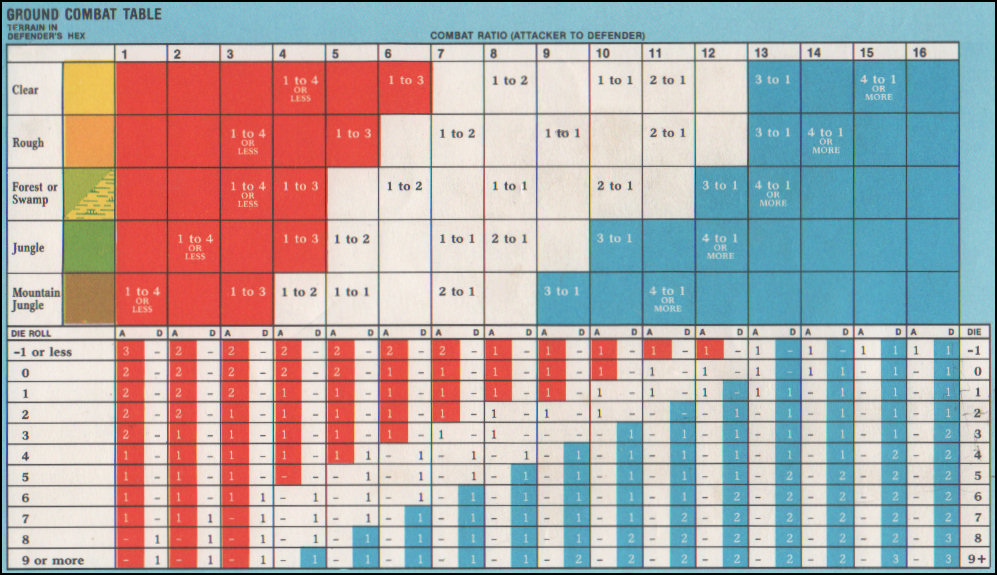
Ground Combat Chart
In ground combat, basic combat odds are calculated in a standard fashion (1-to-1, 2-to-1, 3-to-1, etc.) and then the “Initial Combat Ratio”
marker is placed on the proper odds column of the Ground Combat Table, in the row that matches the terrain where the defender is
located. Terrain effects are built right into the table. For example, the Initial Combat Ratio marker would be placed in column 11 for
a 2-to-1 attack in Clear terrain, but would be placed in column 8 for an attack upon a defender in Jungle terrain. The higher numbered
columns yield better results for the attacker, thus demonstrating that a defender’s odds are better in Jungle terrain than Clear.
Once the “Initial Combat Ratio” marker is placed, other factors are checked to see if there will be any column shifts, either to the right (favoring the attacker) or to the left (favoring the defender). Column shifts are granted for various reasons, such as the presence of artillery, engineers, special forces, attack helicopters on Ground Support missions, etc. Combined arms attacks are well rewarded by the column shifts. After all column shifts are determined for both players, the “Current Combat Ratio” marker is placed in the resulting column.
From that point on, Combat resolution is simple. A die is rolled and possibly modified (+ or -) for other factors, such as defenders in fortifications or attackers assaulting across a river, etc. The modified die roll is cross-referenced with the combat ratio column to arrive at the combat result. The number on the left is the number of hits applied to the attacker; the number on the right, hits applied to the defender. If the background is shaded red, the attacker will have to retreat (yes, the attacker retreats in this game) or, if shaded blue, the defender must retreat.
That’s ground combat in a nutshell.
As I said before, there’s no sweeping armor operations happening in this game but, once U.S. ground and air units are fully engaged, you can expect the enemy bodycount to increase dramatically. So, while I may find the combat results tables a tad boring, they’re probably based on realistic assessments of casualty levels that would be expected in a low intensity conflict.
The Air Combat Table is a bit bloodier than the Ground Combat, depending on the Intensity Level. The Intensity Level is
determined by the total number of aircraft engaged. The total includes all aircraft, even those without combat capability such as
Transports and EW units. This determines the table (Low, Medium or High Intensity) on which the dogfight will be resolved.
Air Combat, in Central America, places great importance on Tactical Air Initiative, which is determined by:
- Presence of EW/AWACS air units
- Proximity to EW ground units (or Masaya, which is a huge EW/Radar center for the Communist Player. Kind of like a ground based AWACS.)
- Proximity to Air Facilities
- Air Combat Rating (if all “D” units are being attacked, the other player will always have Initiative, for example)
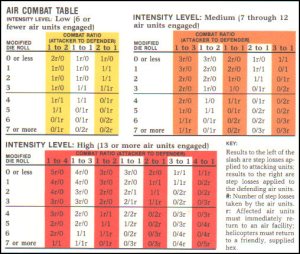
Air Combat Chart
The player with Tactical Air Initiative gets to choose to be either the Attacker or the Defender in the coming combat. Why, you may ask, would an attacker with total Air Combat Value of 16 prefer to be the Defender against an opponent with total Air Combat Value of 6? Well, as the Attacker, 16 to 6 yields a 2-to-1 combat ratio. But as a defender in a 6 to 16 situation, your opponent would have to attack at 1-to-3 odds. Not an inconsiderable difference.
In Central America, an attacking player who is intercepted may designate, at the moment of interception, aircraft as Escorts to
engage interceptors. I find this adds a bit more excitement to the air combat engagements as opposed to the Gulf Strike system where you have
to designate your Escorts at mission inception.
Granted, the Gulf Strike system is probably more realistic since aircraft are armed differently depending on the mission assigned to
them (e.g., Strike vs Escort). But it’s not unreasonable to expect that an F-18, armed for a strike mission, would have some type of
anti-air capability. (Military pilots: please let me know if I’m totally wrong!)
And it sure makes for more interesting air combats, as a player can “re-purpose” aircraft as the situation changes. Keep in mind,
however, that once an aircraft is used in combat as an Escort, it can no longer use its Bombardment values for the remainder of the mission.
Air Combat is similar to gound combat in that (1) an odds ratio is calculated, (2) die roll modifiers are applied, (3) losses are apportioned to either attacker or defender (or both). Most die roll modifiers are linked to the presence or proximity of EW units (ground or air) or air facilities.
It’s quick, it’s fun, and it’s a reasonable simulation of the type of air combat that would occur over Nicaragua. That said, it’s also very difficult for the Communist player to make a dent in the U.S. air armada, even with Soviet and Cuban help. That’s the price you pay for a “reasonable simulation”. Suffice it to say that the Communist player must be extremely judicious in his application of air power.
As I mentioned earlier, the rule books are just chock full of helpful examples, both text-based and graphical. Normally I spend a considerable amount of time designing and creating the graphics for game examples. In the case of Central America the examples are so well done that I can use the layout and text descriptions exactly as they appear in the rule book:
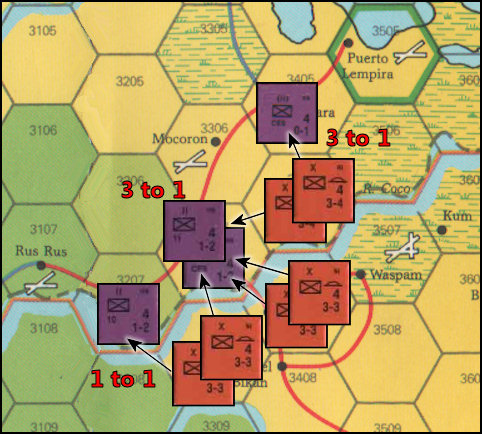
Ground Combat Example
Example of Ground Combat: The Communist player has two Nicaraguan 3-3-4 infantry brigades in hex 3308, two 3-3-4 brigades in hex 3407, and two 3-4-4 brigades in hex 3406. The Allied player has one Honduran 1-2-4 infantry battalion in hex 3207, two 1-2-4 battalions in hex 3307, and one reduced 0-1-4 battalion in hex 3405.
The Communist player could have his two 3-3-4 units in 3308 attack the 1-2-4 battalion in 3207 (6 vs. 2, which is simplified to a ratio of 3 to 1), his two 3-3-4 units in 3407 attack the two 1-2-4 battalions in 3307 (6 vs. 4, simplified in favor of the defender to a ratio of 1 to 1), and the two 3-4-4 units in 3406 attack the 0-1-4 battalion in 3405 (6 vs. 1, or 6 to 1). However, he wants to concentrate his strength against the two 1-2-4 units in 3307.
He decides to attack the 1-2-4 unit in 3207 with one 3-3-4 unit in 3208 (3 vs. 2, simplified to the ratio of 1 to 1) and to attack the 0-1-4 unit in 3405 with one 3-4-4 unit (3 vs. 1, or 3 to 1). He will have one 3-3-4 unit in 3308, the two 3-3-4 units in 3407, and one 3-4-4 unit in 3406 attack the two 1-2-4 battalions in 3307 (12 vs. 4, or 3 to 1). This attack is legal because all adjacent enemy units are being attacked by some Communist unit. The main reason the Communist player chose to attack in this manner was to negate the die roll modifier for river defense against the 1-2-4 units (the FSLN 3-4-4 unit in 3406 is already across the river).

Ground Combat Example (cont'd)
Example of Insurgency Units and Combat: A FSLN 1-1-4 insurgency battalion and the FSLN 2-2-4 Simon Bolivar (SB) special forces battalion use insurgency movement to move from hex 2509 to hex 2308, and an Insurgency Reserve marker has been placed on the stack. A Nicaraguan 2-3-4 infantry brigade in hex 2310 is attacking an FDN 1-2-4 infantry battalion in hex 2309; there is an FDN 1-1-4 insurgency battalion in hex 2307.
During the Ground Combat Phase, the Communist player decides to attack the FDN battalion in 2309 with the Nicaraguan brigade and the special forces unit. The combined Attack Value is 4 (2 + 2 = 4), which results in a 2-to-1 combat odds against the FDN unit. The Communist player receives a one-column shift for the special forces unit and a +1 die roll modifier because it is an insurgency unit. The combat results in the FDN being eliminated, and the Nicaraguan brigade pursues into the vacated hex.
The FSLN 1-1-4 insurgency unit must now attack the FDN insurgency battalion in 2307 (all adjacent enemy units must be attacked). The initial combat ratio is 1-to-1. Because both are insurgency units, the Allied player receives a -1 die roll modifier and the Communist player a +1 modifier, which cancel each other out. However, the FSLN unit is attacking across an unbridged river hexside, so a -2 die roll modifier is applied to the combat. The Communist player rolls the die to resolve the combat. In this case, the FSLN unit takes a step loss and is forced to retreat. The Insurgency Reserve marker remains on the special forces battalion because it was not affected negatively by its combat, and it can move one or two hexes during the Reserve Movement Phase.
The Map
The various Terrain Types and Features on the single 22″ x 32″ game map are clearly delineated and/or color-coded. A simple movement cost per
terrain type, distinct for Armored units and Infantry units, makes learning the basics of ground unit movement a breeze. If I could make one improvement,
it would be to increase the map size by about 20%-25%. Many important pieces of information (objective cities, airfields, national boundaries, Nicaraguan
Border Mines, etc.) are printed directly on the map and players will find themselves constantly shifting pieces around to see what’s underneath.

Terrain Key
The map already contains 3/4″ hexes, and the units are 1/2″, so obviously someone at Victory Games saw the need for roomy hexes. But I would have gone a step further and made full 1″ hexes.
Some unique and notable map features:
- Masaya Detection Range Indicators - Rather than having to count hexes to determine if your aircraft are within range of Masaya (the massive Nicaraguan EW/Radar facility), the radar’s range is marked on the map by small triangles. Thanks, Victory Games, I hate counting hexes…
- Tiger Island - A CIA occupied island right in the middle of the Gulf of Fonseca, which abuts on El Salvador, Honduras and Nicaragua, complete with air strip. Communist units using Boat Transport within 3 hexes of Tiger Island are likely to take a hit if a CIA EW/Engineers unit is present on the island. And one is always present…
- Nicaraguan Border Mines - Small mine indicators on the map provide a visual cue if the optional Border Mines rule is being used. A real nuisance for Allied units attempting to cross into Nicaragua.
- Supply Source Hexes - Outlined with a thick green border for easy identification.
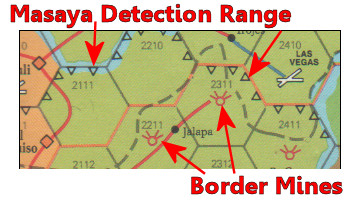
Map Features
All the combat tables and combat modifiers are shown right on the map, along with the Game Turn Track, Victory Point Track, Phase Track (so players can easily track which Game Turn Phase they’re in), and World Tension Track. All well organized and convenient.
Supply
Supply rules are sufficient to enforce some logistics discipline on both players but are not at all onerous. As expected, it’s the U.S. player that’s
most affected by the Supply rules, since they’re the ones operating far from home, but most other units are in their home country and thus don’t really
have to go far to draw the day’s rations. Once you become comfortable with the locations of all Supply Source hexes, and nail down the special
rules for FSLN Logistics Supply Units (LSU), Supply Depots, “Southern Airways Supply” and Hidden Supply Depots, the Supply
rules are not much of a burden.
The Scenarios
One of the strongest features of this game is the variety of predefined scenarios, in general, and the Scenario Generation System, in particular.
Granted, the first few scenarios are quite uninspiring. But they are intended to be training scenarios; much like the “Programmed Instruction”
method that I prefer. I like learning a new game by actually playing the game!. So the first four Central America scenarios, appropriately labeled “Introductory Scenarios“, ease you into the game system quite nicely. They address the core ground, helicopter and air rules. The most interesting of these is a single game turn scenario called “The SS-20 Incident” that enables the Allied player to unleash the full power of two carrier groups in an attempt to locate and seize an SS-20 nuclear missile the Soviets are attempting to place in Nicaragua.
The next five scenarios are identified as "Intermediate Scenarios". They address a range of hypothetical conflicts from an all out
civil war in El Salvador to an expansionist Nicaragua moving against its neighbors (and the inevitable US counter-invasion). While these
scenarios utilize the full set of Conventional and Intervention rules, they are relatively short at 8 to 12 turns. Only one, "Civil War in El Salvador",
is longer, requiring 18 turns. The Intermediates also give us the first taste of the “Diplomacy” aspects of the game. For example, the Communist player
is allowed to attempt to have FMLN/ERP (Salvadoran guerillas) insurgency units break their treaty with El Salvador, spends Insurgency Command Points
to make the attempt, and then rolls on a “Diplomatic” table to see the results of his effort.
By the time you’ve played through these five scenarios, you’re more than prepared to take on the last, and largest, scenario group: the "Campaign Scenarios".
The seven “Campaign Scenarios” are what this game is all about. The group starts off with the lone historical situation: “The 1979 Revolution”
and then proceeds to the “what might have been” scenarios that suppose a major attack against the Sandinistas by the local insurgent groups
(“Christmas War”), and an invasion of Honduras and El Salvador by Nicaragua ostensibly encouraged by the doves in the US government enforcing
a strict “hands-off” policy (“The Contadora Intervention”). The final four campaign scenarios are designed for the hard-core gamer. “Operation
Big Pine”, “Paper Tiger”, “Missiles of Red October”, and “World War III”. The names of these scenarios alone give you an idea that you’ll be
engaging in a long term (20 to 45 game turns) contest for supremacy of either Capitalism or Communism in Central America. Toss in the complete
set of optional rules that include Standoff Air Attacks, Cluster Bombs, Chemical Weapons, and Nicaraguan Torpedo Boats and you’re in war-gaming-hog-heaven, my friends.
But wait. There’s more. Let’s say you spend two years or so, playing the hell out of these great Campaign Scenarios. First of all how many
things (that only cost $30, at the time) can you derive two years of continuous enjoyment from? But, to help me make my point, let’s say that
it’s been two years and now you’re just starting to get bored with the constraints of the scenarios. Enter the "Scenario Generation System".
The Scenario Generation System
The Scenario Generation System, designed by Mark Herman and Michael E. Moore, is really the icing on the cake, as far as I’m concerned. It is what makes the political and military aspects of the game mesh to create a unique and engaging gaming experience.
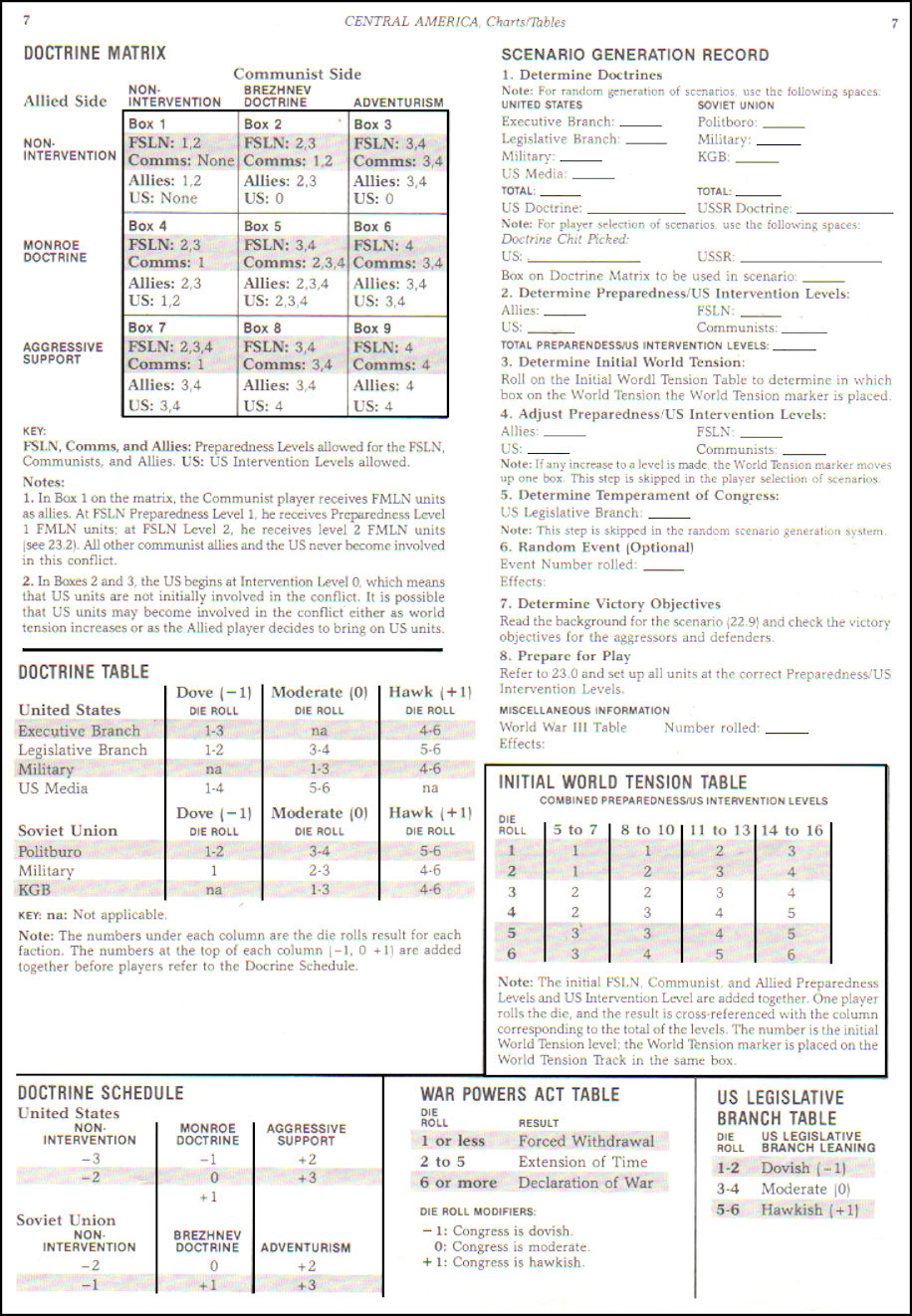
Scenario Generation
Players can use the Random System, in which die rolls determine forces available and the general intensity of the conflict, or
the Player Selection System, which allows the players to select these values. Either of these “generated” systems brings all
of the following elements into play:
- U.S. Doctrine - Non-Intervention, Monroe Doctrine, or Aggressive Support. This “doctrine” can either be chosen by the U.S. player or can be assigned randomly, depending on the System being used (see above).
- Communist Doctrine - Non-Intervention, Brezhnev Doctrine, or Adventurism. (I know… why are we “Aggressive”, a perfectly acceptable behavior, but they were “Adventurists”, demonstrating a reckless disregard for all humanity?)
- Preparedness Levels - For the Communist player, the mobilization and general preparedness of his Nicaraguan, Cuban and Soviet forces. For the Allied player, it refers to the preparedness of Honduran, Salvadoran, Costa Rican and FDN/Contra forces (does NOT include Americans).
- U.S. Intervention Level - A measure of how committed and prepared U.S. forces are for the coming conflict, and how relaxed the rules of engagement will be. This level can be increased and/or decreased during the course of the game.
- World Tension and World War III - Certain player actions and events can increase World Tension, possibly leading to World War III. For example, the conquest by Communist forces of Tegucigalpa, the Honduran capital, or the first time U.S. and Soviet aircraft engage in combat.
- The War Powers Act and the Temperament of the U.S. Congress - This critical measure can result in a range of events from Forced U.S. Withdrawal to a U.S. Declaration of War, and thus can have an enormous impact on U.S.
operations in the conflict.
These options create a real-world flow to the game. Imagine an aggressive US player, loaded for bear, attacking a half-mobilized Nicaragua. Not a very competitive situation at first glance. But what if, due to a sitting US Congress determined to enforce the 30-day provision of the War Powers Act, the US player now only has 15 game turns, representing 30 days, from the first appearance of US forces until the time they must withdraw completely?
The game becomes a completely different contest… a much more interesting and balanced one.
It’s impossible to convey all the nuances and interactions of the Scenario Generation system in the small amount of space available for this review. Besides, that’s what the rulebook is for. Click on the image to the right to see a larger view of some of the charts, tables and record-keeping dedicated to Scenario Generation. It will give you a better sense of the type of information that’s being tracked how it interacts (sorry, it’s not a great scan).
Summary
Central America was not very well received when it was released. I can’t quote the sales figures; I’m just talking about the general concensus among my gaming friends at the time. I’m not sure why it didn’t make a better showing, exactly, and I’ve never heard a convincing explanation from an authoritative source. The whole Iran/Contra affair was a really nasty business and the game was released at the tail end of it, yet while it was still fresh in everyone’s mind. This may have soured a lot of gamers on the whole premise. It’s also possible that the word of mouth about the massive rule books put people off (I remember hearing such talk at the time), but there are other successful games with daunting rules. It’s also plausible that I’m in the minority in my belief that it’s an interesting game, and maybe most folks just didn’t enjoy it. In any event, I played this game quite a bit back in the early 1990’s and, while I never enjoyed it as much as some other Victory Games titles from the 1980’s, I do recall being totally engaged by Central America and being disappointed at my inability to entice a larger number of opponents (only had two opponents, one of whom was my father – and we did play the hell out of it over one summer).
No matter how much time has passed, I’ve gotten the “bug” again and will be playing Central America at every opportunity. One of the most wonderful aspects of the board gaming hobby is that there’s no expiration date on the games. A board game that was enjoyable and challenging in 1987 can still be just as enjoyable and challenging today (July 2012, as I write this). In fact many of the nascent games of our pastime depicted battles from decades past, as in the case of the slew of WWII games that appeared in the 1960’s and 1970’s. Central America, in my opinion, earns an additional lease on life due to the fact that the dreaded “Central American conflagration” never actually happened, leaving us free to try different strategies, unencumbered by historical biases. I’ll be prodding all my gaming buddies to give Central America a try and hope to gain enough renewed experience and expertise to write up some helpful strategy articles. If anyone has some experience with this game, and would like to share, we’d enjoy hearing from you.
Long neglected by the war gaming community, Central America deserves another look, and some evaluation time on every war gamer’s table.